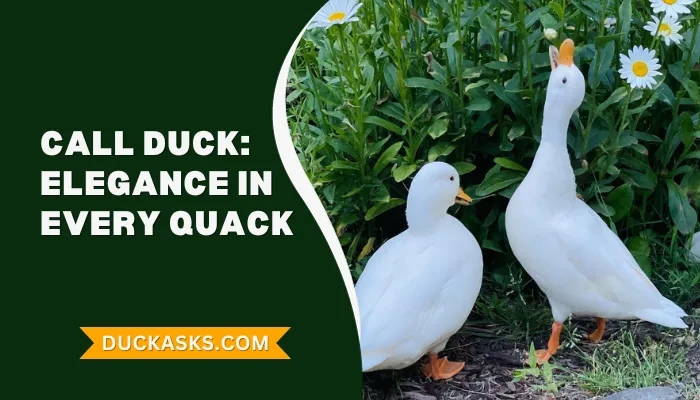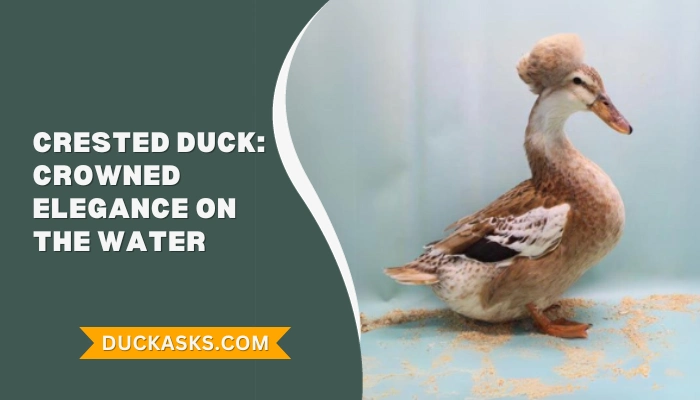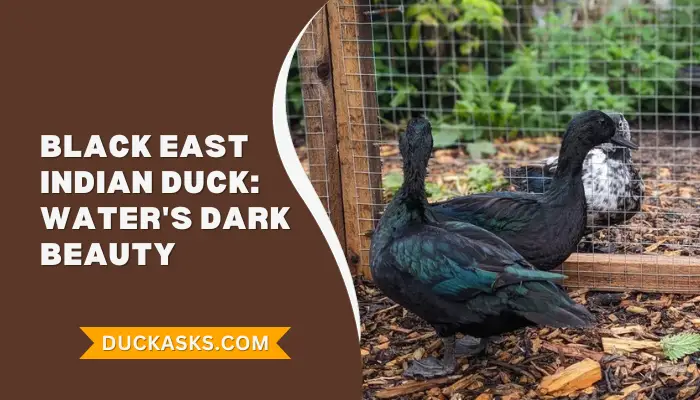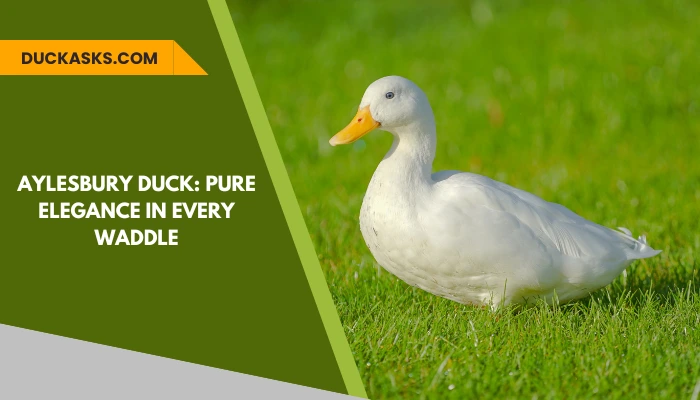Orpington Duck: History And Breed Guide
The Buff Orpington duck is the ultimate duck for many reasons. It has an interesting look, can produce many eggs yearly, and the meat tastes good!
So, you can see why fanciers value this duck breed highly. Regardless of the situation, there’s always a purpose for this duck.
We took it upon ourselves to create this article detailing everything there’s to know about the Buff or Orpington duck. Stick around to learn everything about this duck, including all about the breeding and raising.
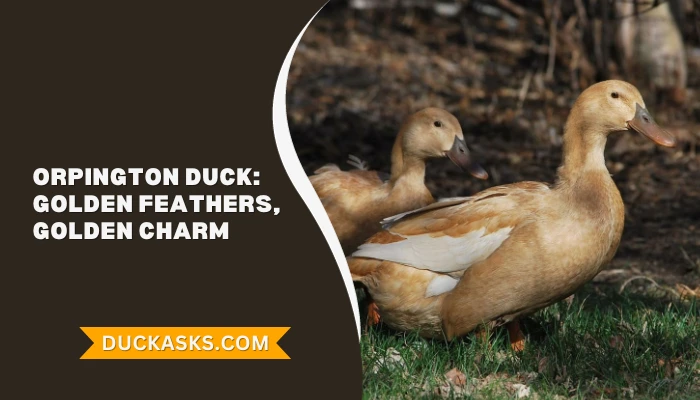
Looking for more articles about duck breed:
Buff or Orpington Duck Profile
| Name | Buff / Orpington Duck |
|---|---|
| Scientific Name | Anas Platyrhynchos Domesticus |
| Common Names | Orpington Buff Orpington Duck |
| Origin | United Kingdom |
| Size | Medium |
| Weight | 5 to 8 Pounds |
| Lifespan | 8 to 12 Years |
| Feather Color | Buff, Blond, Brown |
| Climate Tolerance | High |
| Behavior | Docile |
| Flight | No |
| Breeding and Maintenance | Easy |
| Easy to Keep? | Yes |
| Duck Purpose | Meat and Egg Production |
| Egg Productivity | High |
Overview
The Buff Orpington duck, often called Orpington, is a domestic duck breed. Generally, fanciers raise this duck for meat and egg production. It has a very distinct buff color, which can also vary as blond or brown.
History and Origins of Orpington Ducks
William Cook from England was the first person to develop the Orpington duck.
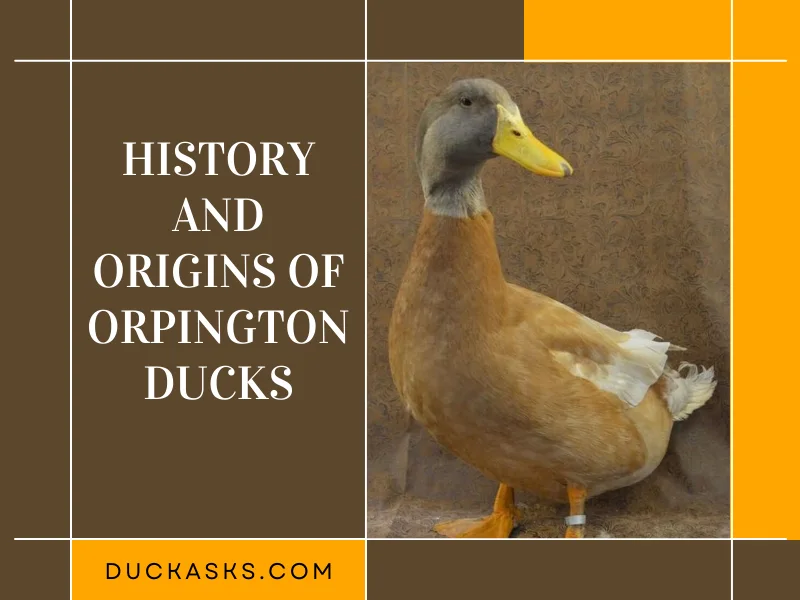
The development of this breed consisted of using mis-marked Blue Orpington ducks, using breeds like the Cayuga, Indian Runner, Aylesbury, and Rouen.
The breed was first introduced to the public in 1897 during the Dairy Show in London.
Fast forward, the breed was accepted in the British Poultry Standard in 1910, and the American Poultry Association’s Standard of Perfection followed suit in 1914.
Physical Characteristics and Features
Identifying the Orpington duck is a breeze. However, there are unique traits that we want to highlight. Check it out.

Appearance and Body Structure
The Oprington is a duck of medium size, usually weighing between 7 and 8 pounds. Generally, this duck can be quite large and broad, featuring an oval head and a bill of medium length.
It has a curved neck, and the duck carries its body 20° above horizontal. Lastly, the longs are short and have a curvature.
Feather Colors
The Orpington duck has buff-colored plumage as the only recognized color. Still, the breed produces other colors, which are blond and brown.
Realistically, the buff color is the result of the blue dilution gene, a gene that doesn’t breed true.
This buff features a reddish undertone, though the ideal color should be an even buff without any shades of grey or white colors.
The same applies to the drakes, which should have glossy brown heads and superior neck area without green and too much blue on the rump.
Other color variations include the Blue Orpington duck, which is most likely extinct. Black, brown, and white Orpingtons existed during the twentieth century, but those colors never got standardized.
Differences Between Orpington Ducks and Orpington Drakes
The difference between Orpington ducks and Orpington drakes is that the ducks have brown-orange bills, whereas drakes have yellow bills.
Likewise, hens weigh between 5 and 6 pounds, while drakes can reach 6 to 8 pounds.
Behavior and Traits of Orpington-Buff Ducks
Learning more about the personality of the duck can help you prepare for what to expect while raising them. Here’s what you need to know –
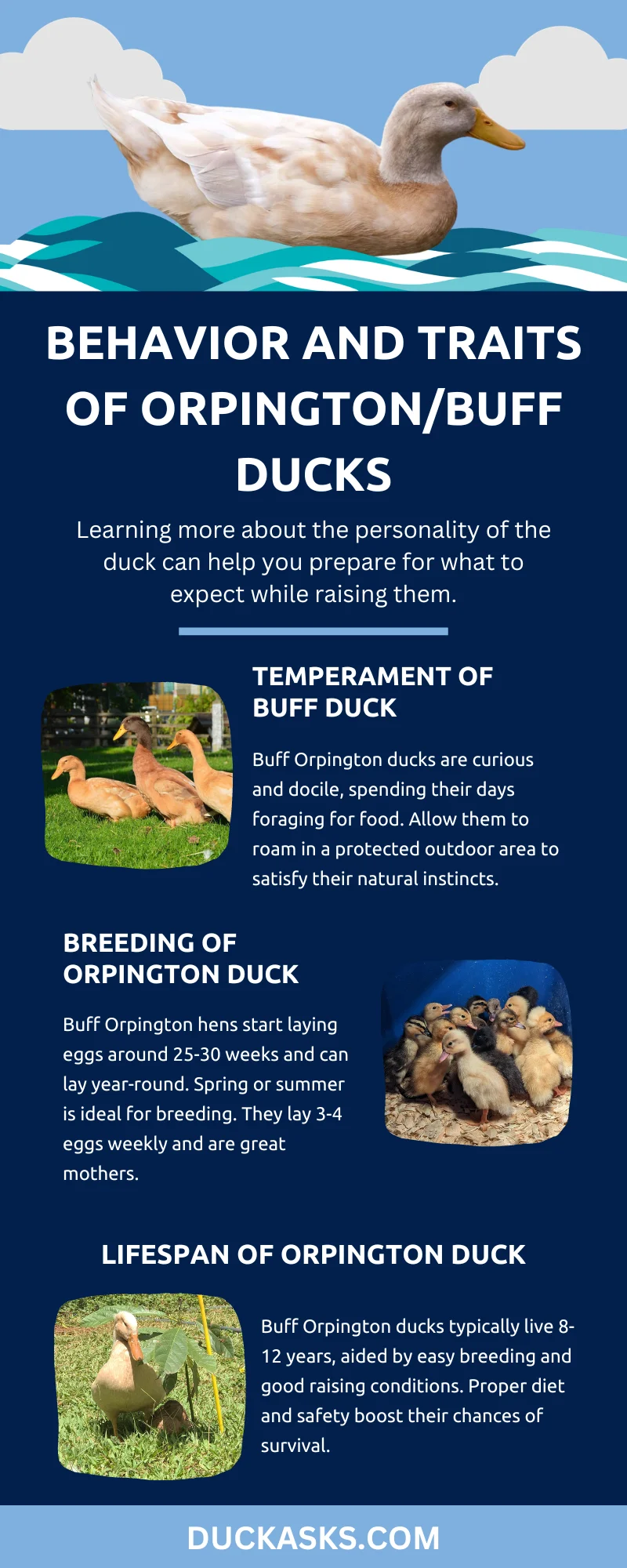
Temperament
Like most other ducks, Buff Orpington ducks are curious and have a docile temperament. As a result, they spend most of the day searching for food.
For this reason, it’s crucial to let them roam freely outside in a protected area.
Breeding
Generally, the Buff Orpington hen will start laying eggs after 25 or 30 weeks since birth and can continue until they’re seven years old. Since they lay eggs year-round, you can mate and breed them during any season.
Still, the recommended breeding time is spring or summer because warmer weather increases success chances.
Mature Buff Orpington hens could lay approximately three to four eggs weekly, and the ducks usually get broody after laying eggs.
Interestingly enough, the female Buff Orpington typically collects unattended eggs, claiming them as their own and taking care of them. For this reason, hens of this breed are excellent mothers and sitters.
Lifespan
Buff Orpington ducks have an estimated lifespan of eight to twelve years. The ducks can live this long partially because they’re easy to breed and don’t have challenging issues while raising them. Still, a proper diet and a safe environment are necessary to increase their likelihood of survival.
Breeding And Raising
The Orpington duck is easy to breed and raise. Still, you need to consider some things to ensure the ducks enjoy good health.

For instance, trips to the vet and regular deworming could benefit the ducks’ health significantly. It will also allow you to identify illnesses quickly to prevent damaging the flock.
Some Tips and Considerations for Successful Breeding
These are other tips to consider for successful breeding of Orpington ducks.
- Get your Orpingtons from a renowned source or provider.
- Lethargic or overly excited ducks may be dealing with health problems. Avoid if possible.
- Evaluate the ducks to ensure they’re healthy. Make sure they walk properly and that their eyes look vibrant and in good shape.
- If you intend to use the ducks for meat production, look for ducks with white-colored pin plumage.
Feeding and Housing Requirements
Raising ducks with access to a backyard is beneficial because they can eat different things like worms, weeds, berries, insects, and seeds.
If there’s a pond, they can consume small fish as part of their diet. All of these contribute to the diet of Buff or Orpington ducks.
Nonetheless, it’s necessary to complement the diet with commercial duck food with balanced ingredients to ensure proper nutrition. Furthermore, you can provide other food like fruits and vegetables.
As a final piece of advice, introduce sand or grit to improve the duck’s digestion process.
Housing Requirements
The Buff or Orpington duck needs a duck house, duck coop, or a run for housing.
These structures must be three feet tall at least and offer up to four square feet of space per duck. You shall also consider the bedding.
Ideally, you should use materials like straw or sawdust shavings because they dry quickly.
Additionally, a window for ventilation is crucial, as well as a fence to protect the ducks from predators.
The Egg Productivity of Orpington Ducks
The Orpington hen can lay from 120 to 220 every year. These eggs are large and can weigh between 80 to 90 grams each.

Typically, the eggs have a white to off-white color. Due to the high amount of eggs they produce, the Buff or Orpington ducks have a considerably high egg productivity.
The Meat Quality and Popularity of Orpington Ducks
The meat quality of Orpington ducks is good and is only second in popularity compared to the Pekin duck.
In this case, Orpingtons can get the ideal weight for butchering from 8 to 10 weeks, and the meat is highly flavored. Plus, the pin feathers are light, making the ducks easy to dress and table-ready.
Frequently Asked Questions
What are buff ducks good for?
Typically, Buff ducks are dual-purpose birds raised for egg and meat production. However, these ducks are also excellent farm pets and pond ornaments. You could even breed them as pets due to their docile nature and ability to adapt to different social conditions.
Are buff ducks friendly?
Buff ducks are friendly birds, meaning they can fit well with humans and co-exist with other birds. So they are not a hassle and will not create a troublesome environment. This is one of the reasons why they make such great pets and why they’re easy to raise.
Are buff ducks cold-hardy?
Yes, Buff ducks have a hardy nature that allows them to adapt to cold and warm environments. The reason is that the ducks have a unique feather build that keeps them heated. On the other hand, they use water to remain cooled off and fresh during hot weather conditions.
Conclusion
The Buff or Orpington Duck is among the most beneficial ducks to breed and raise. Once they’re mature, you can use them to produce meat and eggs or to keep them as decoration or companionship.
This range of options guarantees you cannot go wrong with this duck. We love the Orpington duck and all things related to ducks and birds.
Want to learn more? Check our other articles, and don’t forget to follow us on Facebook, Twitter, and Pinterest for more informative guides about the bird world!
References:
- https://livestockconservancy.org/heritage-breeds/heritage-breeds-list/buff-orpington-duck/
Image Credit:
- https://www.instagram.com/tomgoody17/
- https://www.instagram.com/livestockconservancy/
- https://www.instagram.com/solheim_hobbyfarm/

